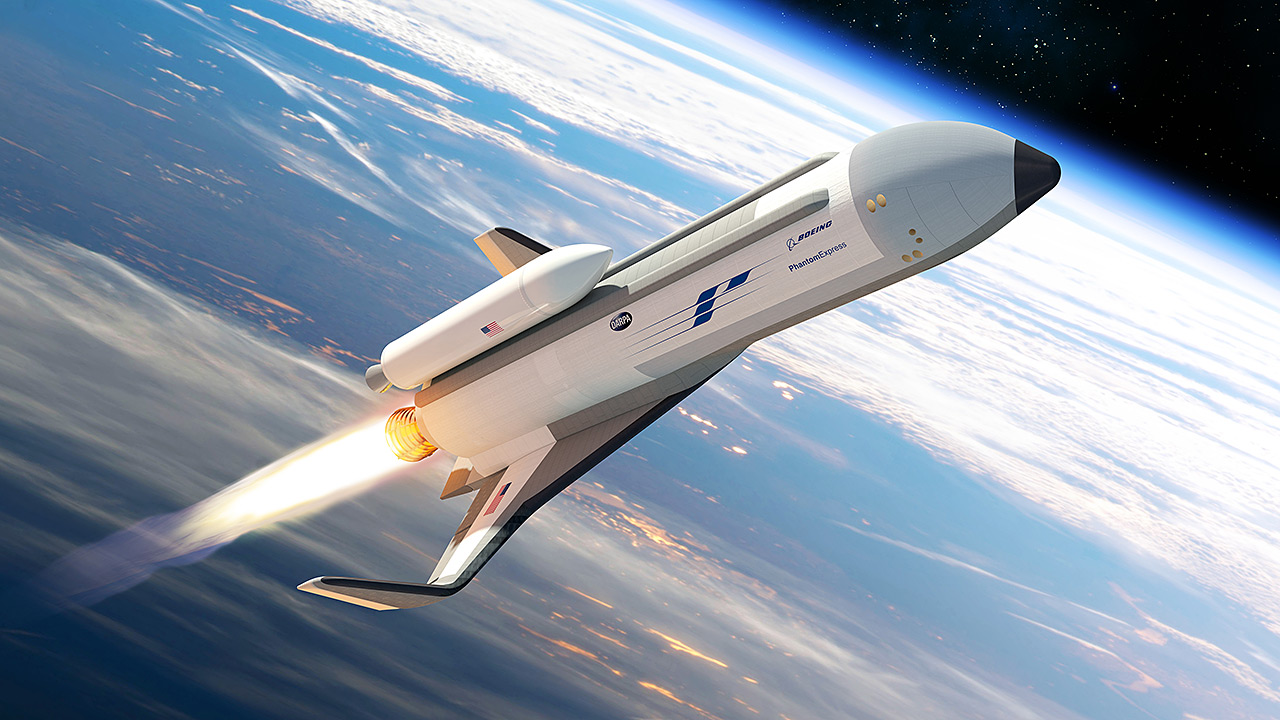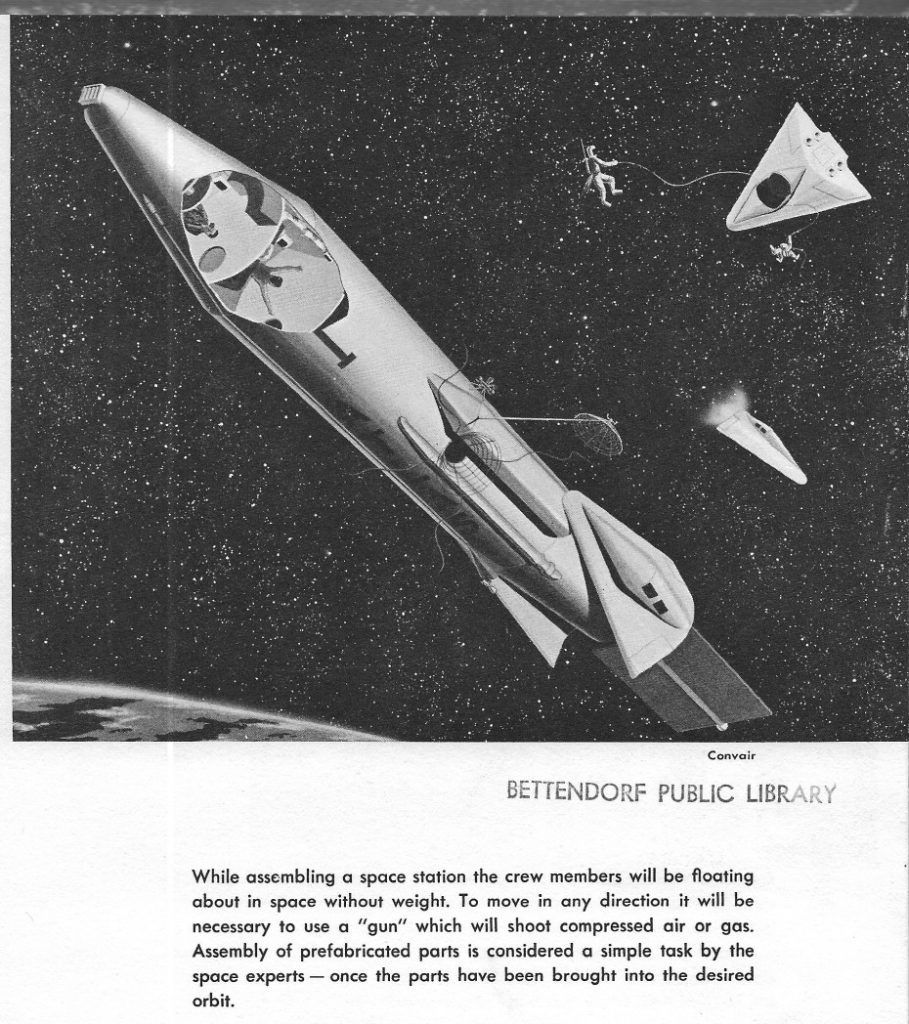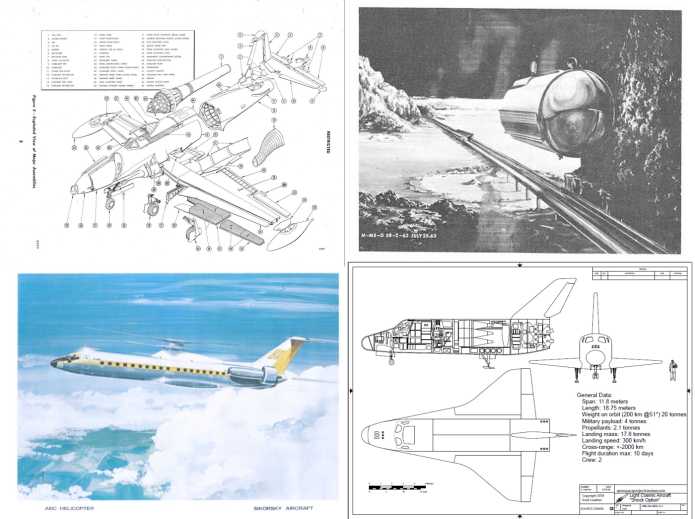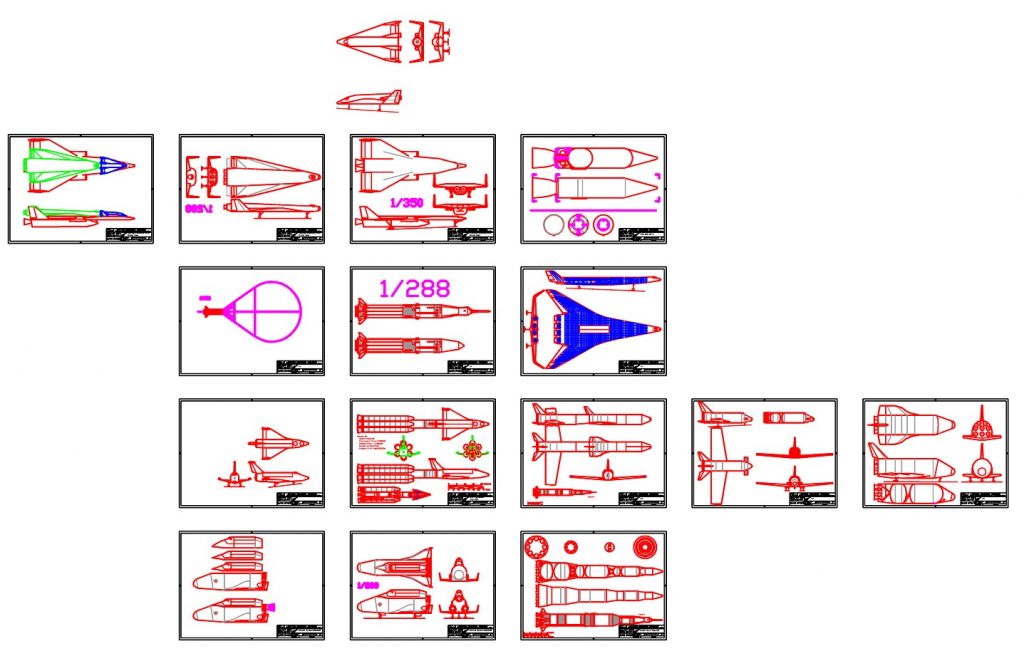Very late 1950’s Convair promo art of their “Outpost” space-base built from an Atlas launch vehicle. This was publicized enthusiastically by the likes of Krafft Ehricke; it preceded the MOL program, and would have resulted in a manned facility somewhat similar in size, thought dissimilar in capability. The MOL was a pre-finished, single-launch space lab, while the “Outpost” as a “wet lab” would have required considerable effort by workers in space suits to finish. To service the Outpost, an Atlas with a Centaur-like upper stage would orbit two wedge-like lifting bodies.
This video tackles the question “why don’t we just make more F-1 rocket engines?” A similar question, “Why don’t we just restart production of the Saturn V” has been common among space fans for *decades.* And the fact is… we can’t.
The video points to the loss of skills and direct knowledge of those who worked the F-1 fifty years ago. When the F-1s were built, it took more than the blueprints; it also took manufacturing instructions. It’s more than juat “weld these parts together,” it’s *how* to weld. And while the blueprints still exist, the notes – and the knowledge stored only in the technicians heads – are long gone. This is a problem I saw directly back in my days working at United Tech and ATK. A story I’ve related before is how through virtually sheer random chance, while working at ATK I was called up by one of the techs hoping that I could direct them to a former co-worker from United Tech, because that co-worker was responsible for the manufacturing instructions on a motor that had been transferred from the one company to the other (because United Tech collapsed and all their programs were transferred to other companies). I got them to explain just what the issue they were having was… and then I burst out laughing because *I* was the guy at United Tech who had figured out how to solve the manufacturing issue. My co-worker had apparently never gotten around to re-writing the instructions, so an important detail had been lost and only rediscovered through an unlikely circumstance. Now, the ATK techs certainly could have figured out a solution, quite possibly the exact same solution, or maybe even a better solution… but they’d never have known if their solution was the “right” one, and Odin only knows how long it would have taken them to work the problem. And in government rocketry, “well, we’re unsure how it was supposed to be done, so we’re doing it this way” is almost never the right answer. Management will Freak The Hell Out.
And along with the loss of knowledge and skills is the loss of *stuff.* If you try to rebuild the Saturn V based on a complete and pristine set of fifty-year-old blueprints, one of many problems you’ll discover is that a lot of the off-the-shelf stuff meant to go in it… doesn’t exist anymore. “Install a MomNPopCo Brand temperature sensor model 14B HERE.” Ooops, they went out of business in 1971. “Wrap with Bleedin’ Lungs Brand six-inch-wide asbestos tape.” Ooops. “Install a HAL 90 computer here.” Ooops, especially because the mass of the thing is require for balance, but that’s not called out in the blueprint because why would it be. “Insulate with bakelite.” Ooops. “Machine from thorium-alloy component 128047h-8 from Bomarc program.” Ooops.
In aerospace, once it’s lost, it’s *very* hard to get back. No more Saturns. No more F-1s. No more SR-71s. No more Avro Arrows or Peacekeeper missiles or F-22s.
See also “FOGBANK.” Never let your nuclear weapons manufacturing programs sit idle.
China reveals details for super-heavy-lift Long March 9 and reusable Long March 8 rockets
Long March 8: meant to emulate the Falcon 9 with a vertically-recovered core, but also use vertically-recovered solid rocket boosters (likely via parachute, though art seems to indicate that they too will have landing legs).

Long March 9: intended to be Saturn V class for manned missions to the Moon and beyond.

No indication that the Long March 9 is aiming for reusability, so it seems likely that the Chinese are emulating not the BFR but the SLS. It is too much to hope that China will emulate the spectacular economics of the SLS as well.
There was a time when rocket engineers and launch vehicle/spacecraft designers felts reasonably comfortable proposing the use of propellants that today would be considered *insane.* One of these was fluorine, an oxidizer so powerful that it will oxidize *oxygen.* Liquified it is denser than LOX and provides a higher specific impulse than LOX when burned with the same fuels. On paper, liquid fluorine is spectacular. In reality, fluorine is toxic and just about all of the combustion compounds are toxic (burn it with hydrogen and you get hydrofluoric acid, which will eat your bones). Fluorine has the added bonus that it will merrily combust with a whole lot of structural materials, so you have to be careful in your design and preparation for tanks, pumps, lines, etc.
Consequently, it was important to know your stuff. To that end, Douglas Missile & Space Systems Division produced a Fluorine Systems Handbook.
This Handbook contains criteria for the design of airborne fluorine feed
systems and associated components. Two types of information are presented:
1) philosophical information defining general methods, and 2) detailed specifications
and procedures. Although the major emphasis has been upon
criteria for components exposed to elemental fluorine, the information is
general applicable to systems utilizing other cryogenic oxidizers which contain
fluorine as a constituent.
So if you are planning on fueling your rocketship with liquid fluorine… here ya go. You’re welcome.
Fluorine Systems Handbook
In just under the wire for June, 2018 are the rewards for APR Patreon patrons. Included this month:
- A sizable January, 1945 technical description of the YP-80 “Shooting Star” by Lockheed. 300 or so pages, filled with illustrations of the aircraft and components.
- “On The Utility of the Moon in Space Transportation: the Lunatron Concept.” A 1963 NASA concept for using an electromagnetic accelerator to hurl payloads from the lunar surface onto high energy trajectories, up to solar system escape.
- A scan of a large-format Sikorsky lithograph of an ABC (advancing blade concept) VTOL airliner (basically a 727 fuselage turned into a high-speed helicopter).
- An all-new CAD diagram of the Soviet Chelomei LKS spaceplane with an inboard profile showing the military (nuclear bombardment) payload. The first in a series on the LKS.
If you are interested in helping to preserve (and get copies of) this sort of thing, consider signing up for the APR Patreon.
First draft of diagrams for the next issue of US Launcher Projects. This will include concepts such as an eight-F-1 Nova, a 1962 Lockheed fully reusable spaceplane launcher, a Boeing HTOHL SSTO, a Convair VTOHL Delta Clipper competitor, a giant SPS launcher, a balloon-recovered Saturn I, an early Space Shuttle concept and an expendable SSTO.
The first Aerojet-Rocketdyne AR-22 rocket engine has recently been assembled. This is a somewhat modified version of the old Space Shuttle Main Engine, meant specifically to power the first stage of the Boeing “Phantom Express” spaceplane. Thrust is 375,000 pounds and the engine is meant to be used 55 times, with servicing every 10 missions.
First Engine Assembled for DARPA and Boeing Reusable Experimental Spaceplane
The Phantom Express is meant to fly often and inexpensively… and appears to be basically an updated version of the mid-90’s Rockwell design for the X-33. It’s not clear to me that a hydrogen-burner using SSME-derived tech can compete economically with the likes of the Falcon 9, but the Phantom Express isn’t really intended to compete in the commercial market. Instead, the Phantom Express is intended as military launch system, lobbing relatively small satellites – communications and recon, with the possibility of GPS-replacements in the event that military action takes them out. Given that any future war with a major opponent will certainly involve attacks on American space infrastructure, it’s reasonable for DARPA to want to have as many rapid response launch systems as practical. The basic concept underlying the Phantom Express is simple and straightforward enough, and likely to be somewhat more rugged and reliable than the hoverslam landing system of the Falcon series… at the cost of probably weighing more.

This Startup Got $40 Million to Build a Space Catapult
SpinLaunch, Inc, wants to build themselves a slingatron. If it works it will accelerate a launch vehicle of some kind to 3,000 miles per hour… at ground level. The aerothermal heating and drag loads should prove impressive, thus the vehicles look like updated Sprint missiles.

A Boeing illustration from 1964 showing a number of designs for lifting entry vehicles that Boeing had produced by that point. Most of these are manned vehicle concepts; a few of them are unfamiliar to me. The “B-3 —– B” looks like it might have been an ASSET competitor. The “Recoverable Booster” at top is one of several similar V-shaped designs that used a modestly modified Dyna Soar as the crew capsule up front. One such design was the Model 895 shown (along with competing ASP designs from other firms) in Aerospace Projects Review issue V2N5.




